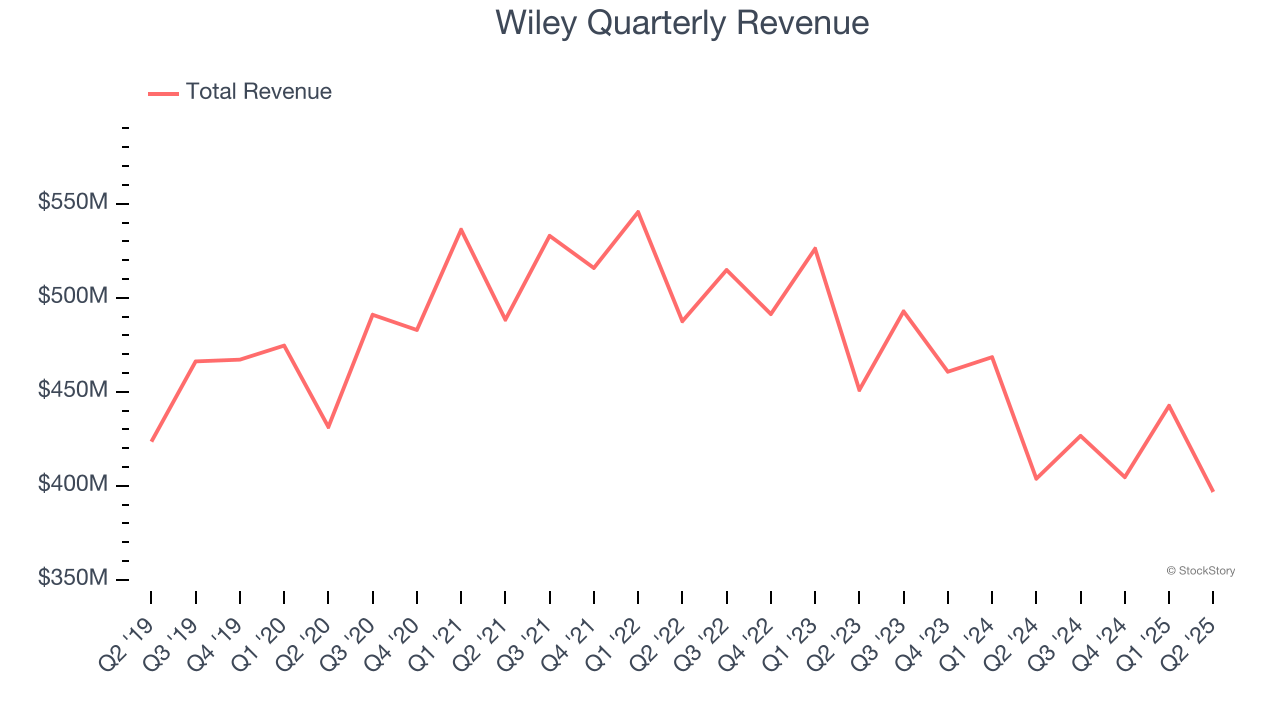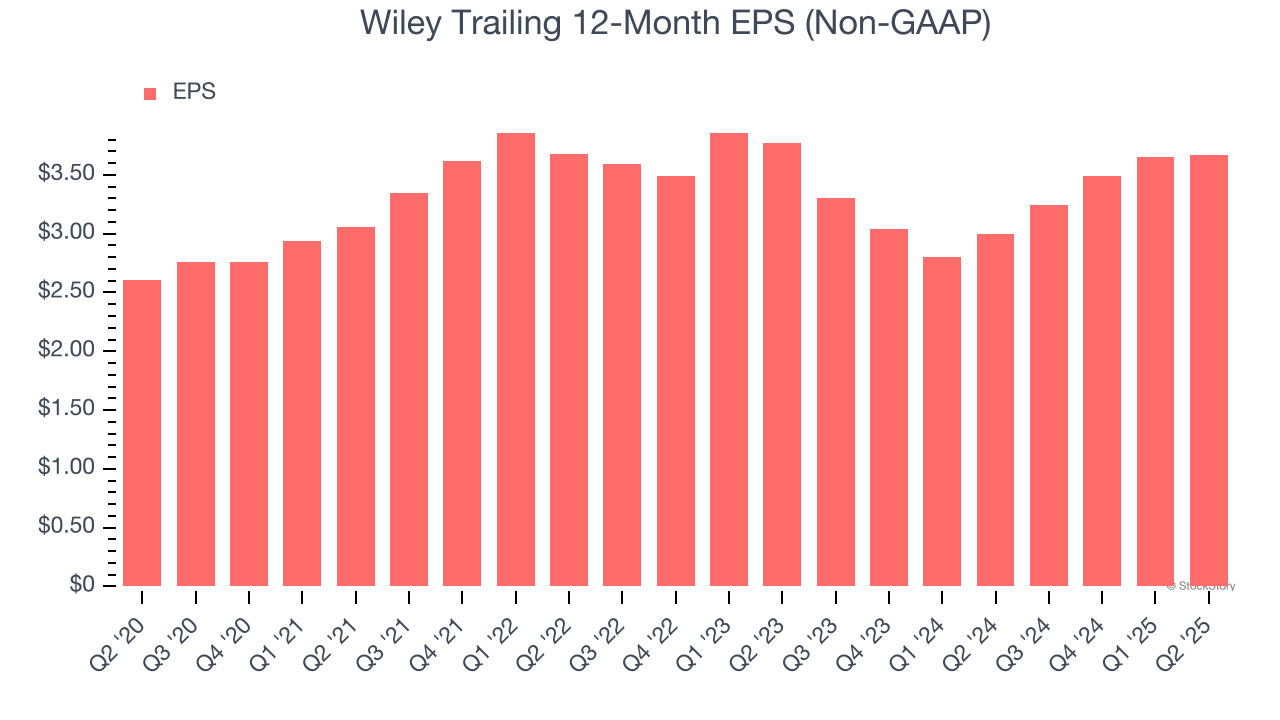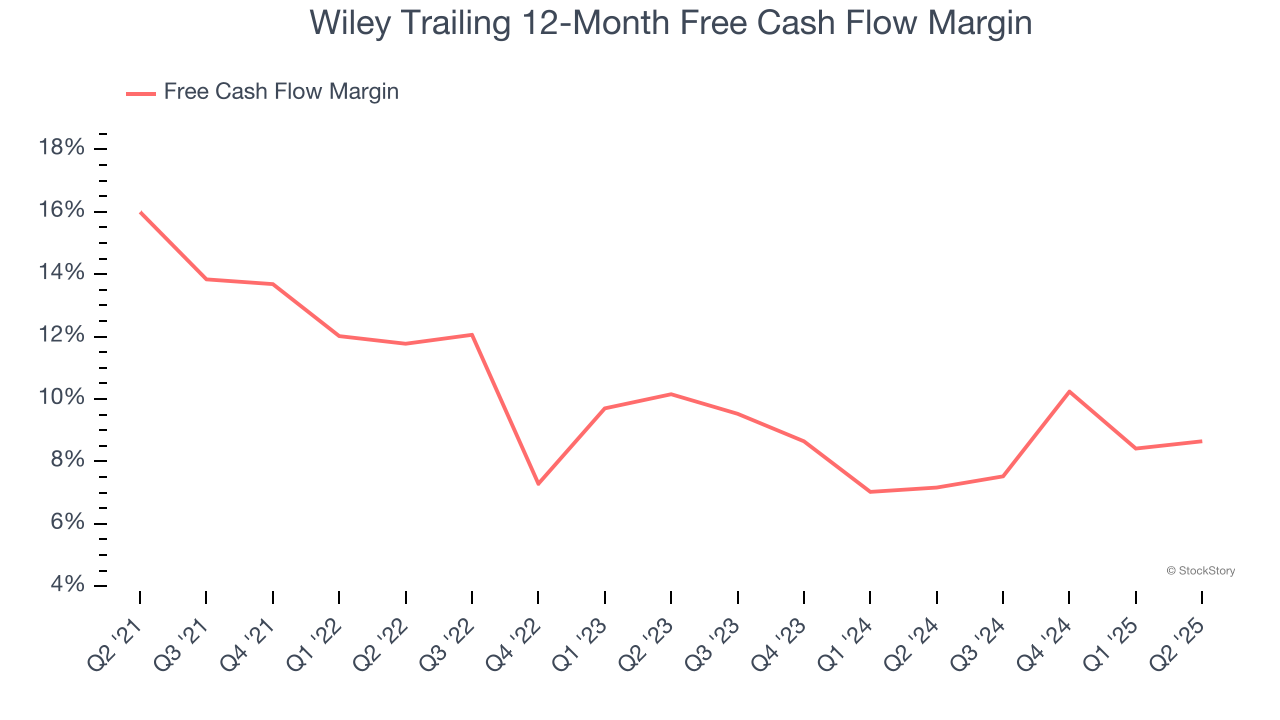
Over the last six months, Wiley’s shares have sunk to $37.41, producing a disappointing 11.8% loss - a stark contrast to the S&P 500’s 26.5% gain. This might have investors contemplating their next move.
Is there a buying opportunity in Wiley, or does it present a risk to your portfolio? See what our analysts have to say in our full research report, it’s free for active Edge members.
Why Do We Think Wiley Will Underperform?
Despite the more favorable entry price, we don't have much confidence in Wiley. Here are three reasons why WLY doesn't excite us and a stock we'd rather own.
1. Revenue Spiraling Downwards
Reviewing a company’s long-term sales performance reveals insights into its quality. Any business can put up a good quarter or two, but many enduring ones grow for years. Wiley’s demand was weak over the last five years as its sales fell at a 1.9% annual rate. This wasn’t a great result and is a sign of poor business quality.

2. EPS Barely Growing
Analyzing the long-term change in earnings per share (EPS) shows whether a company's incremental sales were profitable – for example, revenue could be inflated through excessive spending on advertising and promotions.
Wiley’s EPS grew at an unimpressive 7.1% compounded annual growth rate over the last five years. On the bright side, this performance was better than its 1.9% annualized revenue declines and tells us management adapted its cost structure in response to a challenging demand environment.

3. Free Cash Flow Margin Dropping
Free cash flow isn't a prominently featured metric in company financials and earnings releases, but we think it's telling because it accounts for all operating and capital expenses, making it tough to manipulate. Cash is king.
As you can see below, Wiley’s margin dropped by 7.3 percentage points over the last five years. If its declines continue, it could signal increasing investment needs and capital intensity. Wiley’s free cash flow margin for the trailing 12 months was 8.6%.

Final Judgment
We see the value of companies helping their customers, but in the case of Wiley, we’re out. After the recent drawdown, the stock trades at 5.6× forward EV-to-EBITDA (or $37.41 per share). This multiple tells us a lot of good news is priced in - we think there are better opportunities elsewhere. We’d recommend looking at a top digital advertising platform riding the creator economy.
Stocks We Would Buy Instead of Wiley
When Trump unveiled his aggressive tariff plan in April 2025, markets tanked as investors feared a full-blown trade war. But those who panicked and sold missed the subsequent rebound that’s already erased most losses.
Don’t let fear keep you from great opportunities and take a look at Top 5 Growth Stocks for this month. This is a curated list of our High Quality stocks that have generated a market-beating return of 183% over the last five years (as of March 31st 2025).
Stocks that made our list in 2020 include now familiar names such as Nvidia (+1,545% between March 2020 and March 2025) as well as under-the-radar businesses like the once-small-cap company Comfort Systems (+782% five-year return). Find your next big winner with StockStory today.
StockStory is growing and hiring equity analyst and marketing roles. Are you a 0 to 1 builder passionate about the markets and AI? See the open roles here.





